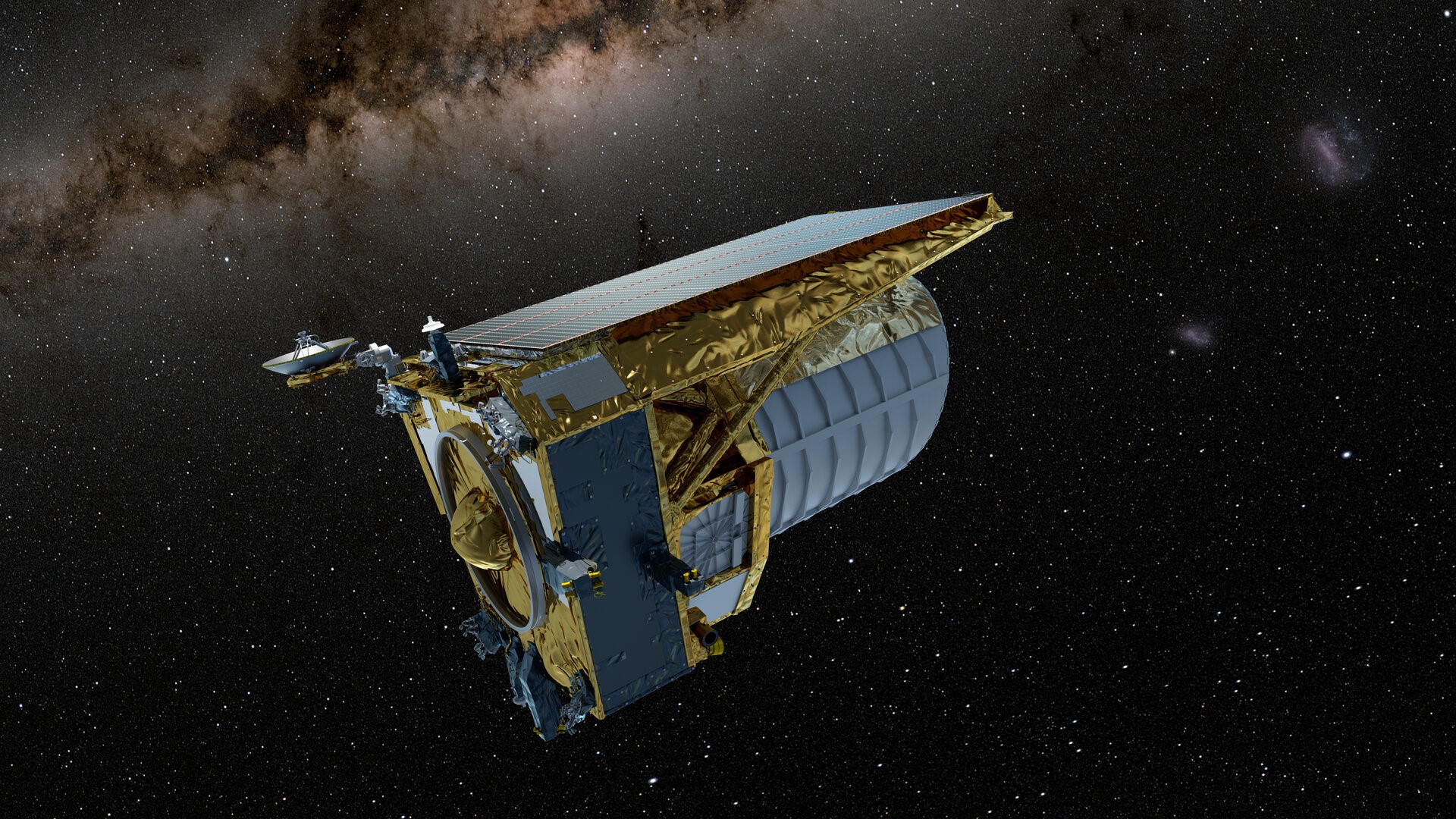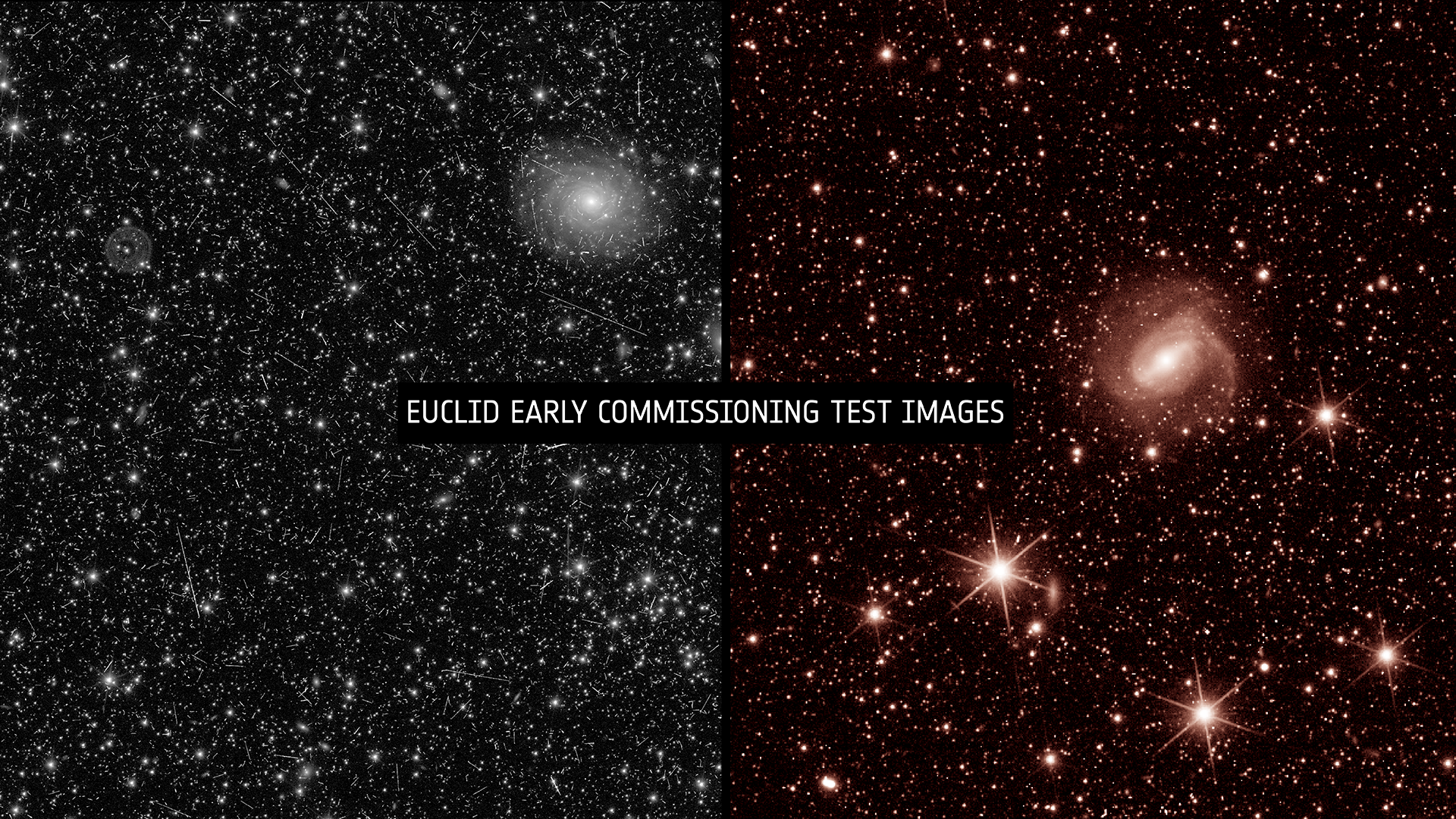
Editor's note: Euclid's first images are here! Read our release story to see what this "dark universe" telescope is capable of.
Today (Nov. 7), we'll get to see the universe in full color through the eyes of the European Space Agency's (ESA) Euclid telescope for the first time.
Euclid mission scientists are gathering in Darmstadt, Germany, to discuss the telescope's first five full-color images of the distant cosmos, and you can watch the reveal live at 8:15 a.m. EST (1315 GMT) here on Space.com, courtesy of ESA. In addition to holding scientific value, the images are also expected to be great cosmic eye candy.
Launched in July on a six-year mission to study the cosmos, Euclid is now studying the dark side of the universe from a perch roughly 1 million miles (1.6 million kilometers) from Earth — the same cosmic accommodation as NASA's mighty James Webb Space Telescope.
Related: 'Dark universe' telescope Euclid faces some setbacks during commissioning
Euclid has been tasked with building an innovative 3D map of the dark universe by charting out shapes and distributions of billions of galaxies and star clusters up to 10 billion light-years away, primarily in search of clues about elusive dark matter and dark energy.
To achieve that goal, the telescope is primed to take enough sharp images of large swaths of the sky in visible and infrared wavelengths to fill a million DVDs. To investigate the dark universe, Euclid will observe weak gravitational lensing, a cosmic phenomena which occurs due to the chance alignment of galaxies or conglomerations of matter, which allows foreground galaxies to behave like a giant magnifying lens of objects behind them. Light from background sources is distorted, even multiplied on its way to Earth, such that we see their twisted, surreal illusions around lensing galaxies.
Since visible matter comprises just 10% or so of the total mass of most galaxy clusters, scientists suspect invisible dark matter particles are responsible for much of this lensing. So, studying galaxy clusters could shed light on the behavior and nature of dark matter — but those images need to be super-sharp to bring fuzzy lensed images around galaxies into focus.

Euclid gave humanity a taste of its abilities at the end of July, when it sent home two images dotted with countless stars and sprinkled with blobs of light, which are really faraway galaxies.
The latest images will no doubt be equally enchanting. They also will reassure scientists that the telescope instruments are working as expected.
"The mission is almost ready to start its six-year collection of data," Roland Vavrek, Euclid's deputy project scientist, who has been involved with the mission since 2013, said in a video released on Friday (Nov. 3).
Update 11/6: The livestream will be broadcast starting at 8:15 a.m. ET, not 9:15 a.m. ET.







